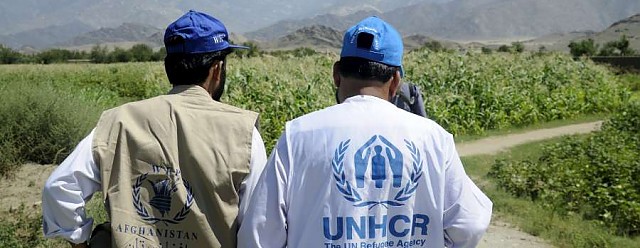Home > What We Do > Emergency Response > Coordinating Assistance
Coordinating Assistance

In humanitarian operations, aid organizations must work in partnership if they are to help the most people in the most effective way. To this end, UNHCR has attempted to provide clarity about how it works in the field by standardizing its best practices in coordinating emergency response and delivering aid and protection. The new model builds on principles developed by the Inter-Agency Standing Committee (IASC), the primary mechanism for inter-agency coordination of humanitarian assistance, on leadership, coordination and accountability while taking into account the specific situation of refugees and the needs of their host communities.
The host country's primary responsibility for the protection of refugees remains, while UNHCR continues its direct relationship with the host government on all refugee matters and co-leads inter-agency contingency planning and the response. Standard elements for the coordination of refugee assistance and protection efforts include leadership by UNHCR and partners on developing the protection, assistance and solution strategy, as well as a multi-sector operations team and a protection working group.
A more systematic approach to UNHCR's coordination processes will make operations more predictable, inclusive and partner-friendly and help to ensure that refugees and other people of concern receive the assistance and protection they need.
In situations where refugees are present in a country alongside other recipients of humanitarian assistance, or in geographically separate areas, UNHCR's refugee coordination arrangements ensure complementarity with the IASC cluster system, while maintaining the refugee response as a stand-alone segment for accountability, delivery, funding and international protection purposes.
In April 2014, UNHCR and the UN Office for the Coordination of Humanitarian Affairs (OCHA) agreed to simplify and clarify their coordination arrangements in a bid to achieve greater efficiency and effectiveness in delivery of services to the forcibly displaced while avoiding duplication at the delivery level.